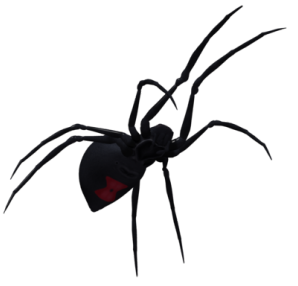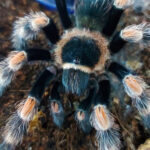Country of Origin: Mexico
Natural Environment and Behavior:
Brachypelma hamorii, also known as the Mexican Redknee Tarantula, is a fascinating species of tarantula native to Mexico. It is often confused with its close relative, Brachypelma smithi, as both have been referred to as Mexican redknee tarantulas in the past. However, recent studies have clarified the distinctiveness of B. hamorii.
This terrestrial tarantula is found in the western regions of the Sierra Madre Occidental and Sierra Madre del Sur mountain ranges, specifically in the Mexican states of Colima, Jalisco, and Michoacán. Its appearance is characterized by black to reddish-black legs and palps with three distinct colored rings. The patellae closest to the body exhibit a deep orange color, transitioning to pale orange-yellow further away. The lower part of the tibiae is pale orange-yellow, while the metatarsi end in a yellowish-white hue. Adult males possess light greyish-red markings around the border of the carapace, with a darker reddish-black marking from the middle of the carapace to the front of the head. The upper surface of the abdomen is black. Adult females display more variation in carapace color and pattern. The carapace can be predominantly black with a brownish-pink border, or it may exhibit a “starburst” pattern with pale orange-yellow areas.
Initially, B. hamorii was misidentified as B. smithi due to their similarities. However, subsequent research clarified the distinguishing characteristics between the two species. The chelicerae of B. hamorii may exhibit two brownish-pink bands on a greyish background, which are absent in B. smithi. Additionally, mature males of the two species can be differentiated by the shape of the palpal bulb, while females show differences in the structure of the spermatheca. DNA barcoding has further supported the differentiation between B. hamorii and B. smithi. Although they appear similar externally, their DNA barcodes clearly distinguish them as separate species.
Like most New World tarantulas, B. hamorii has urticating hairs on its abdomen and back legs, which it flicks when disturbed rather than biting. These tarantulas are considered docile and only slightly venomous to humans. While their large fangs can cause painful puncture wounds, proper treatment can prevent secondary bacterial infections.
The natural habitat of B. hamorii is hilly deciduous tropical forests along the Pacific Coast of Mexico, specifically in the states of Colima, Jalisco, and Michoacán. They construct or extend burrows under logs, rocks, tree roots, and among thorny shrubs and tall grass. These deep burrows provide protection against predators such as the white-nosed coati and serve as an ambush site for prey. Female tarantulas spend the majority of their lives within their burrows, which typically consist of a single entrance leading to one or two chambers. The entrance is slightly larger than the spider’s body size, and the tunnel can be three times the tarantula’s leg span in length. The chambers provide a safe space for molting and feeding, with the entrance sometimes sealed with silk, soil, and leaves for privacy during important life events such as molting or egg-laying.
Longevity:
Females: 25-30 years, males: 10 years.
Size:
Up to 14cm.
Husbandry:
Keep at 65-75% humidity and 24-27°C, use a mix of coconut fiber and peat moss.
Enclosure Size:
5-10 cm for spiderlings, 10-15 cm for juveniles, and 30*30*30 cm or more for adults.

